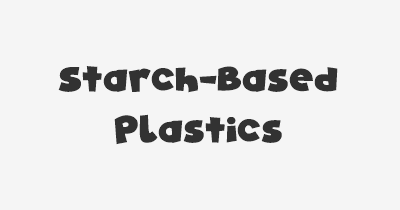
50 - 100 Years
Lifespan of Polyvinyl Chloride (PVC) is 50 - 100 Years. Polyvinyl Chloride (PVC) durability is influenced by factors like temperature, moisture, and pressure. Proper care and maintenance can extend its longevity and performance.
Useful Information
Polyvinyl Chloride (PVC) exhibits strength, flexibility, and moderate conductivity. Different types of PVC, such as rigid PVC and flexible PVC, offer unique characteristics for various applications.
Polyvinyl Chloride (PVC) is commonly used in construction for pipes, windows, and flooring. It is also prevalent in healthcare for IV tubing and blood bags. Its versatility extends to fashion accessories like belts and bags.
Polyvinyl Chloride (PVC) durability varies based on exposure to temperature, moisture, and chemicals. Factors affecting its lifespan include UV exposure and mechanical stress. To enhance durability, store PVC away from direct sunlight and regularly inspect for any damage.
Understand how temperature variations can affect the durability of thermoplastics and learn effective ways to prolong their lifespan in different conditions. Read more
The environmental impact of PVC production involves the use of chlorine and release of toxic substances. Eco-friendly alternatives like bio-based PVC or recycling efforts help reduce environmental harm. Sustainable practices like PVC recycling contribute to a greener approach.
To maintain PVC, avoid harsh chemicals that can degrade its surface. Clean PVC with mild soap and water, and store it in a cool, dry place to prevent degradation. Regular inspections for cracks or brittleness can help prolong its lifespan. Proper disposal through PVC recycling helps reduce waste and environmental impact.
Lifespan Comparisons
| Compared Item | Comparison Description |
|---|---|
| Lifespan of Polyethylene (PE) | Polyvinyl Chloride (PVC) has a lifespan about half as long as Polyethylene (PE). |
| Lifespan of Polypropylene (PP) | Polypropylene (PP) lasts significantly longer than Polyvinyl Chloride (PVC) but not as long as Polyethylene (PE). |
| Lifespan of Polystyrene (PS) | Polystyrene (PS) can last as long as Polyethylene (PE), making it a durable alternative to Polyvinyl Chloride (PVC). |
| Lifespan of Polyethylene Terephthalate (PET) | Polyethylene Terephthalate (PET) shares a similar lifespan range with Polyethylene (PE) and outlasts Polyvinyl Chloride (PVC) by a significant margin. |
| Lifespan of Titanium Alloys | Titanium Alloys have a lifespan comparable to Polyvinyl Chloride (PVC) but are more durable in certain applications. |
| Lifespan of Cobalt Alloys | Cobalt Alloys have a shorter lifespan than Polyvinyl Chloride (PVC) but are chosen for specific characteristics in different industries. |
| Lifespan of Gold | Gold lasts longer than Polyvinyl Chloride (PVC) and is prized for its durability and value over time. |
| Lifespan of Silver | Silver has a similar lifespan to Polyvinyl Chloride (PVC) but offers different properties and uses in various fields. |
| Lifespan of Antibacterial Wipes | Antibacterial Wipes have a much shorter lifespan than Polyvinyl Chloride (PVC) due to their single-use nature. |
| Lifespan of Chlorhexidine Solution | Chlorhexidine Solution lasts longer than Polyvinyl Chloride (PVC) and is a crucial product in healthcare settings. |
| Lifespan of Stone Hand Axes | Stone Hand Axes have an incredibly long lifespan compared to Polyvinyl Chloride (PVC), showcasing the durability of ancient tools. |
| Lifespan of Flint Arrowheads | Flint Arrowheads can last longer than Polyvinyl Chloride (PVC), highlighting the longevity of traditional weaponry. |
| Lifespan of Bronze Age Tools | Bronze Age Tools have a lifespan measured in cycles, offering a different metric for durability compared to Polyvinyl Chloride (PVC). |
| Lifespan of Iron Swords | Iron Swords have a shorter lifespan than Polyvinyl Chloride (PVC) due to their material composition and maintenance requirements. |
| Lifespan of Obsidian Blades | Obsidian Blades last longer than Polyvinyl Chloride (PVC) and showcase the durability of this natural volcanic glass. |
Frequently Asked Questions
Lifespan of Polyvinyl Chloride (PVC) is 50 - 100 Years.
Extreme temperature exposure can impact the durability of PVC. Store it away from heat sources to prolong its lifespan.
Rigid PVC offers strength, while flexible PVC provides flexibility. Each type has specific properties suitable for various applications.
PVC is frequently used in construction for pipes, windows, and flooring due to its durability and versatility.
Consider eco-friendly alternatives like bio-based PVC or participate in PVC recycling programs to lessen environmental harm.
Regularly inspect for damage, clean with mild soap and water, and store PVC away from direct sunlight to ensure longevity.
PVC is prevalent in healthcare for IV tubing and blood bags, as well as in fashion accessories like belts and bags.








